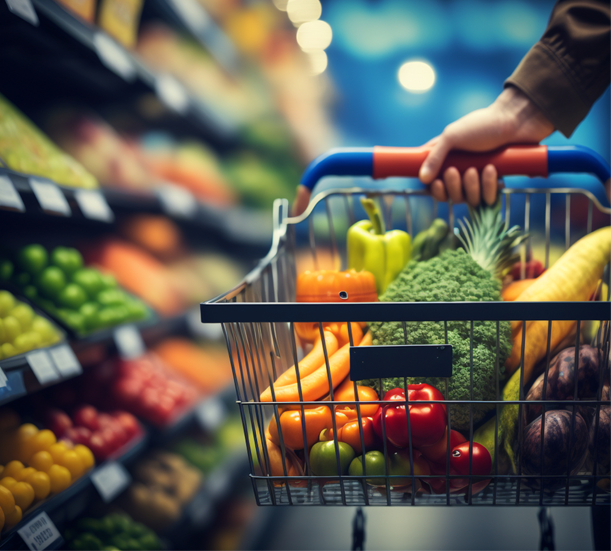
Defining value to drive brand loyalty
How consumer perception of your product’s value impacts sales and brand loyalty
It’s well-known that your product’s success starts and ends with the consumer. What’s often less understood is how to make your product stand out from the competition and encourage repeat sales. The answer is in consumer perception of value.
While universally desired, ‘value’ lacks a singular definition and is shaped by the customer need, product and circumstances. Value can mean different things to different people. For some, value is gauged on a dollar-per-weight scale; for others, it’s meeting a certain set of criteria like nutritional composition, perceived quality or alignment to ethical beliefs. Purchase decisions reflect consumer values and priorities, and your ability to align to these will impact sales and brand loyalty.
So, how you can identify the specific features that consumers value? The first step is understanding your consumer’s needs.
Understanding consumer needs
It’s easy to leap to price as the central purchase driver for consumers, but navigating consumer needs is much more complex. Like value, needs are based on a number of attributes shaped by the situation, and understanding which are most important is essential to meeting expectations and gaining competitive advantage.
Price does play an important part in consumer purchase decisions – in fact, 46% of APAC consumers are looking for sales or lower prices on packaged foods and beverages. However, other factors like ingredient claims, ingredients and nutritional information rank nearly equal to or greater than price in terms of importance and can outweigh the price in terms of overall perceived value.1
Until recently, uncovering these key drivers and priorities has been left to trial and error. Our proprietary ATLAS product simulator mimics consumer purchasing behaviour to uncover optimal combinations of ingredients, claims and price and project the percentage of consumers who would choose to buy each product if available on the market.2 Tools like this can enable you to take a proactive approach to delivering the value your consumers seek.
Developing products that have what consumers value
So, how do you translate the consumer need, preferences and priorities into consumer-winning products that increase sales and brand loyalty? We’ve identified three areas that drive multi-dimensional value for you and your consumers: consumer well-being, environmental impact and value creation.

Consumer well-being
Pertains to consumer-facing benefits such as nutritional improvements (e.g., sugar reduction, added fibre and protein) as well as label claims like natural/all natural, non-GMO, free-from and organic

Environmental impact
Includes elements related to sustainability, such as sourcing, reduction of carbon, water or energy metrics and minimising food waste

Value creation
Refers to factors that drive value for manufacturers, such as improvements to product quality and/or processes, technical expertise, replacing high-cost ingredients and entering profitable categories
The need for products – and ingredients – that support consumer well-being continues to grow as consumers place increasing value on their health. In fact, in a 2022 McKinsey study, over half of consumers stated that healthy eating is a top priority, and younger consumers reported changing their eating habits to try to be healthier.3 This, along with the introduction of regulations around nutritional thresholds and the continued emergence of studies backing the benefits of ingredients like fibre, drive the need for products that limit undesirable ingredients like fat, sugar, and sodium while adding ingredients that consumers want like plant-based proteins and those that provide the perception of “goodness” or support digestive health or clinical nutrition needs.
As it relates to sustainability, consumers expect trusted manufacturers to champion efforts and provide transparency and metrics to validate their sustainability efforts. Company sustainability efforts that have met these criteria have been shown to build consumer trust. Annual sustainability reports can shed light on company initiatives, like regenerative agriculture efforts, ethical sourcing and reducing resource-intensive ingredients, while sustainability calculators can measure environmental impact of resources.
Lastly, the persistence of inflationary pressures is leading manufacturers to explore various tactics to protect their margins, including offering less product for the same price point. While “shrinkflation” may seem a practical short-term option, the risk to brands is significant: more than half of consumers indicated a willingness to switch brands while others said they would buy lesser quality or stop buying certain items. By partnering with technical experts and looking at top and bottom-line management, you can maximise your business impact while offering improved features that customers seek. Cost savings calculators can help also quantify the benefit.
Meeting consumer and business needs can be accomplished. Regardless of how you pursue value, ensure credibility. Clearly communicate product attributes and work with trusted partners who can help you to meet the evolving consumer demand while still delivering a quality product your consumers expect.
Discover how to drive value for your consumer
Ready to advance your brand with consumer-preferred labels that deliver value to your consumers and your business? Explore the nutrition, health and wellness space, sugar reduction solutions and texturiser resources for everything you need to create the crunchy, crispy, chewy products and the clean and simple labels your consumers prefer.
Let’s make your goals a reality
Agile collaboration. Deep formulation expertise. Broad portfolio of in-demand ingredients. Market research and consumer insights.
1. ATLAS, Ingredion Proprietary Consumer Research, 2023
2. ATLAS, Ingredion Proprietary Product Simulator, 2023
3. McKinsey, “Hungry and confused: The winding road to conscious eating,” October 5, 2022
